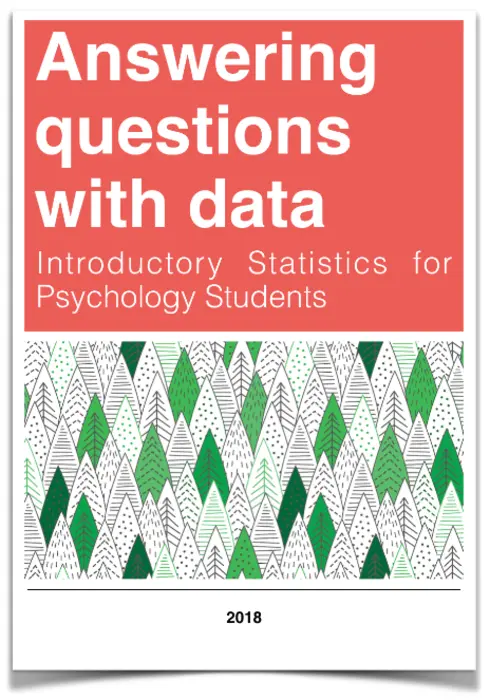
Answering questions with data: Introductory Statistics for Psychology Students
![]()
![]()
![]()
![]()
![]()
Matthew J. C. Crump, Brooklyn College - City University of New York
Copyright Year:
Publisher: Crump Lab
Language: English
Formats Available
Conditions of Use
![]() Attribution-ShareAlike
Attribution-ShareAlike
CC BY-SA
Reviews
Reviewed by Esther Loanzon, Faculty/Dept Chair, Portland Community College on 6/30/20
Gives down to earth and real life applications of statistical data. Though, glossary is missing , it would be helpful to have this for quick reference. read more
![]()
![]()
![]()
![]()
![]()
Reviewed by Esther Loanzon, Faculty/Dept Chair, Portland Community College on 6/30/20
Comprehensiveness
Gives down to earth and real life applications of statistical data. Though, glossary is missing , it would be helpful to have this for quick reference.
Content Accuracy
Content is objective, mostly accurate but can still need some editing of texts.
Relevance/Longevity
Examples of research studies are outdated (some as old as 1963). Empirical references are valued but information and times change rapidly. We are in a digital world where software programs are available to acquire faster , comprehensive and more accurate data analysis.
Clarity
Jargon are used effectively and in simple, comprehensible language for a beginning student to understand concepts easily.
Consistency
Content terminology and framework are coherent and structured in an orderly manner for quick understanding.
Modularity
Topics are divided into too many reading sections which can be helpful for quick reference but can also be distracting for some readers. A major topic heading and chunking subheading would be appropriate to realign concepts clearly. Different strategies of understanding concepts are presented such as concrete examples, short practice exercises/drills, video clips and graphics.
Organization/Structure/Flow
Topics are presented in a systematic approach making it easy for readers to follow the sequence, anticipate the next topic and cross reference past topics.
Interface
No major issues were encountered with video clips. Graphics for charts and tables can still be improved using digital application to enhance reader/student enthusiasm.
Grammatical Errors
Too few and minor to notice.
Cultural Relevance
As pointed out earlier, even if some of the references used were dated (1965 until 1975), there are no overt cultural sensitive issues presented. Broad examples were given that may not be sensitive or inclusive of race, ethnicity and other background.
CommentsThe book is a helpful manual for beginning psychology students or any student taking up psychology as an elective course or minor program. It would have been more effective if a glossary was provided for quick reference to terminology or jargon.
Table of Contents
- 1 Why Statistics?
- 2 Describing Data
- 3 Correlation
- 4 Probability, Sampling, and Estimation
- 5 Foundations for inference
- 6 t-Tests
- 7 ANOVA
- 8 Repeated Measures ANOVA
- 9 Factorial ANOVA
- 10 More On Factorial Designs
- 11 Simulating Data
- 12 Thinking about answering questions with data
- 13 GIFs
About the Book
This is a free textbook teaching introductory statistics for undergraduates in Psychology. This textbook is part of a larger OER course package for teaching undergraduate statistics in Psychology, including this textbook, a lab manual, and a course website. All of the materials are free and copiable, with source code maintained in Github repositories.
About the Contributors
Author
Matthew J. C. Crump, Brooklyn College - City University of New York
